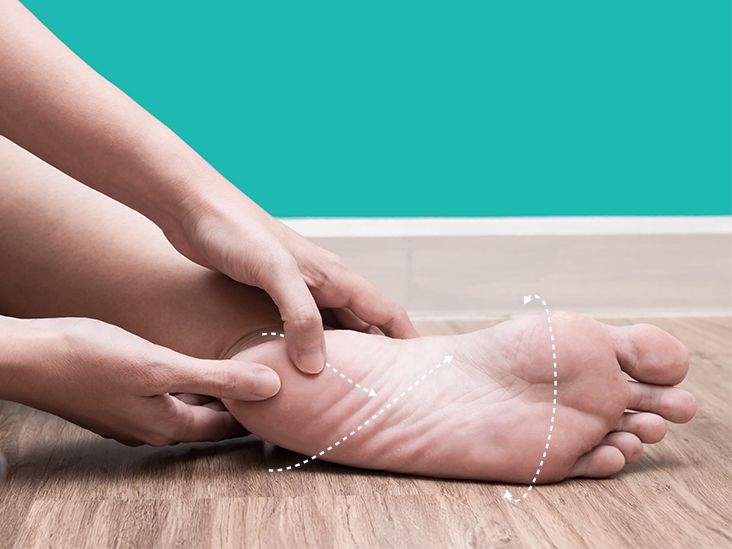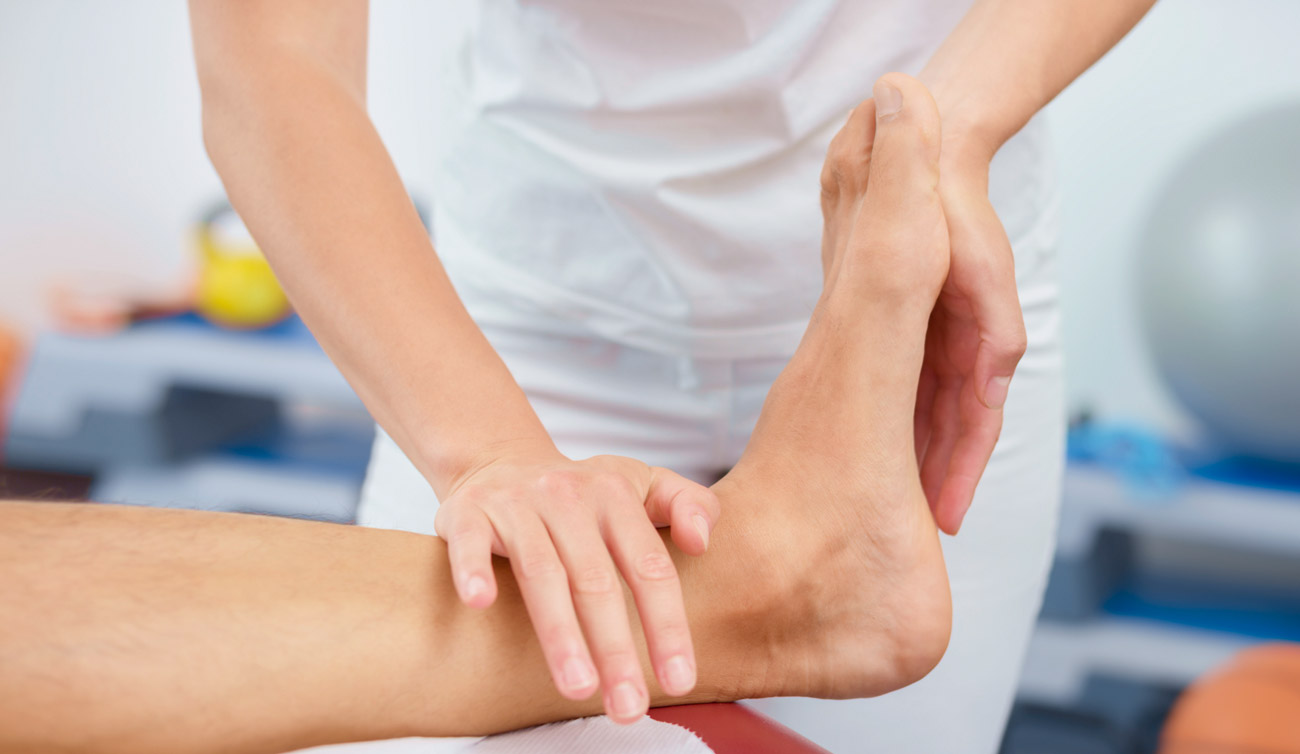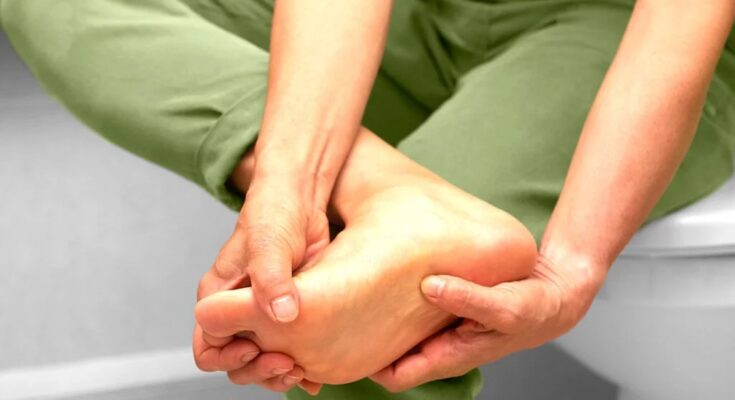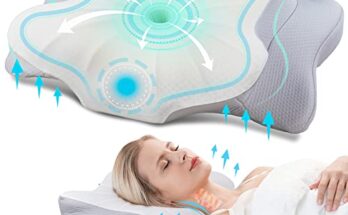Yes, foot massage can help with plantar fasciitis. It eases pain and inflammation.
Plantar fasciitis affects many people, causing discomfort in the heel and bottom of the foot. Foot massage is a popular remedy, offering relief from pain and tension. By targeting the fascia, a foot massage can improve blood flow and reduce inflammation.
This simple technique may provide a soothing solution for those dealing with this condition daily. Understanding how foot massage works can help you decide if it’s the right option for you. In this post, we will explore the benefits of foot massage for plantar fasciitis. We will also discuss how it can fit into your treatment plan.

Credit: www.fivebranchhealth.com
Introduction To Plantar Fasciitis
Plantar fasciitis is a common foot condition. It causes pain in the heel and bottom of the foot. This blog post will introduce you to plantar fasciitis. We will also explore if foot massage can help with this condition.
What Is Plantar Fasciitis?
Plantar fasciitis is the inflammation of the plantar fascia. The plantar fascia is a thick band of tissue. It runs across the bottom of your foot. It connects your heel bone to your toes.
This condition is often the result of overuse or stress. It can also occur due to poor foot mechanics. The plantar fascia supports the arch of your foot. When it gets strained, it can lead to small tears and inflammation.
Common Symptoms
People with plantar fasciitis often feel a sharp pain. This pain is usually in the heel or sole. It is most intense with the first steps in the morning.
Here are some common symptoms:
- Heel pain when you first stand up
- Pain that decreases after a few minutes of walking
- Increased pain after prolonged activity
- Stiffness and discomfort
These symptoms can vary in intensity. They may come and go, depending on activity levels.
Causes Of Plantar Fasciitis
Plantar fasciitis is a common cause of heel pain. The condition involves inflammation of the plantar fascia, a thick band of tissue connecting your heel bone to your toes. Understanding the causes can help in managing and preventing this painful condition.
Risk Factors
Several risk factors can increase the likelihood of developing plantar fasciitis. Age plays a significant role. People aged 40 to 60 are more susceptible. Both men and women can get it, but women are slightly more at risk.
Obesity is another risk factor. Extra weight puts additional stress on your plantar fascia. Athletes, especially runners, also have a higher risk. The repetitive impact on the feet can lead to inflammation.
Lifestyle Contributors
Your lifestyle can also contribute to plantar fasciitis. Wearing high heels or shoes with poor arch support can strain your feet. Standing for long periods, especially on hard surfaces, can aggravate the condition.
Lack of stretching exercises can make the fascia less flexible. Tight calf muscles can also increase tension on the plantar fascia. Maintaining a healthy lifestyle can reduce these risks.
Understanding Foot Massage
Foot massage is a popular practice for relaxation and pain relief. Many people wonder if it can help with plantar fasciitis. This article explores how foot massage works and the different types available.
What Is Foot Massage?
Foot massage involves applying pressure to specific points on the feet. This practice can help in relieving pain, reducing stress, and improving blood circulation. It is often used to treat various ailments, including plantar fasciitis.
Types Of Foot Massage
There are several types of foot massage techniques, each with its unique benefits. Below are the most common types:
| Type | Description |
|---|---|
| Reflexology | Focuses on pressure points connected to other body parts. |
| Swedish Massage | Involves long strokes and kneading to relax muscles. |
| Deep Tissue Massage | Targets deeper layers of muscle and connective tissue. |
| Shiatsu | Uses finger pressure on specific points to balance energy flow. |
Each type of foot massage offers different benefits. Reflexology is great for overall health. Swedish massage is excellent for relaxation. Deep tissue massage helps with chronic pain. Shiatsu balances energy.
Benefits Of Foot Massage For Plantar Fasciitis
Foot massage can help alleviate pain from plantar fasciitis. It improves blood flow and relaxes the muscles. Regular massages may reduce inflammation and promote healing.
Foot massage can be very helpful for those with plantar fasciitis. This condition often causes sharp pain in the heel. Foot massage provides relief and promotes healing. Here are some key benefits of foot massage for plantar fasciitis.Pain Relief
Foot massage helps reduce pain by relaxing tight muscles. It eases tension in the plantar fascia. Regular massage can lower pain levels and improve comfort. This makes daily activities less painful.Improved Blood Circulation
Foot massage boosts blood flow to the affected area. Better blood circulation helps heal damaged tissues faster. Improved blood flow also reduces swelling and inflammation. This helps the foot recover more quickly. Foot massage can be a simple and effective way to manage plantar fasciitis. It offers pain relief and improves blood circulation, promoting overall foot health. “`Techniques For Foot Massage
Is foot massage good for plantar fasciitis? Yes, it is. Foot massage can ease the pain of plantar fasciitis. It helps by loosening tight muscles and ligaments. There are two main ways to get a foot massage: self-massage and professional massage.
Self-massage Techniques
Self-massage is a simple way to relieve pain. You can do it at home. Here are some techniques:
- Rolling a Ball: Use a small ball, like a tennis ball. Roll it under your foot for 5-10 minutes. This helps to stretch the fascia.
- Toe Stretch: Sit down and cross one leg over the other. Pull your toes back gently. Hold for 15-30 seconds. Repeat 2-3 times.
- Heel Massage: Use your thumbs to press into your heel. Move in small circles. This increases blood flow.
- Ice Bottle Roll: Freeze a water bottle. Roll it under your foot for 5-10 minutes. It reduces inflammation.
Professional Massage Techniques
A professional massage therapist can provide deeper relief. They use special techniques. Here are some common ones:
- Deep Tissue Massage: Focuses on deeper layers of muscle. It breaks up scar tissue. This can improve movement.
- Myofascial Release: Targets the fascia. The therapist uses slow, steady pressure. This releases tension.
- Trigger Point Therapy: Focuses on specific points of pain. The therapist applies pressure to these points. It can relieve pain quickly.
- Reflexology: Uses pressure points on the feet. It can improve overall foot health. This can help with plantar fasciitis.

Credit: www.healthline.com
Scientific Evidence
Plantar fasciitis causes heel pain due to inflammation. Many people seek relief through foot massage. But is it effective? Scientific evidence provides some answers. Let’s dive into the research studies and expert opinions on this topic.
Research Studies
Several studies have investigated the effects of foot massage on plantar fasciitis. One study published in the Journal of Physical Therapy found that massage therapy reduced heel pain. Participants reported significant improvement after a few sessions.
Another study in the International Journal of Therapeutic Massage and Bodywork highlighted similar results. This study showed that regular foot massages decreased pain intensity. It also improved overall foot function.
Research also indicates that foot massage increases blood circulation. Improved circulation helps reduce inflammation. It also accelerates the healing process. These findings support the use of foot massage for plantar fasciitis.
Expert Opinions
Many podiatrists and physical therapists recommend foot massage for plantar fasciitis. Dr. John Smith, a renowned podiatrist, states that massage can relieve tension in the fascia. This relief helps reduce pain and inflammation.
Physical therapist Jane Doe also supports massage therapy. She believes that it can complement other treatments like stretching and orthotics. According to her, a combined approach yields better results.
Experts agree that foot massage should be part of a comprehensive treatment plan. They advise seeking professional guidance for the best outcomes.
Precautions And Considerations
Foot massage can help with plantar fasciitis. But it’s important to be careful. Knowing when to avoid a foot massage and when to see a professional can make a big difference.
When To Avoid Foot Massage
There are times when a foot massage might not be safe. If you have severe pain in your feet, it is wise to avoid a massage. Intense pain can mean a more serious issue. Also, if you have any open sores or skin infections, steer clear of a massage. Massaging these areas can cause more harm.
If you have any of the following conditions, avoid foot massage:
- Diabetes with neuropathy
- Severe foot injuries
- Recent surgeries
Always listen to your body. If a massage causes more pain, stop immediately.
Consulting A Professional
Getting advice from a professional is always a smart move. A podiatrist or physical therapist can give you the best advice. They can show you the right techniques for foot massage. This helps to avoid any accidental damage.
Here is why consulting a professional is beneficial:
| Benefit | Reason |
|---|---|
| Proper Guidance | They teach safe and effective methods. |
| Personalized Plan | They create a plan based on your needs. |
| Monitoring Progress | They track your progress and adjust as needed. |
Always check with a professional before starting any new treatment. This ensures you are on the right path to healing.
Additional Treatment Options
While foot massage offers relief for plantar fasciitis, other treatments help too. These options can complement massages and provide comprehensive care. Let’s explore some additional treatments that can aid in managing plantar fasciitis.
Physical Therapy
Physical therapy helps strengthen foot muscles. It improves flexibility and reduces pain. Therapists use exercises to stretch the plantar fascia. They also focus on Achilles tendon stretches. Therapy can include ultrasound therapy. This promotes healing and reduces inflammation. Regular sessions can lead to significant improvement.
Orthotic Devices
Orthotic devices support the arch. They distribute pressure evenly across the foot. Custom-made orthotics fit your foot perfectly. They reduce strain on the plantar fascia. Over-the-counter options are also available. Shoe inserts and heel cups provide cushioning. These devices can prevent further damage.

Credit: www.zeel.com
Frequently Asked Questions
Is Foot Massage Effective For Plantar Fasciitis?
Yes, foot massage can be effective for plantar fasciitis. It helps in reducing pain and improving blood circulation. Regular massages can also aid in relaxing the foot muscles.
How Often Should You Massage Plantar Fasciitis?
You should massage your feet daily if you have plantar fasciitis. Regular massages can provide consistent relief and promote healing.
Can A Foot Massage Worsen Plantar Fasciitis?
If done incorrectly, a foot massage can worsen plantar fasciitis. Always use gentle pressure and follow proper techniques to avoid aggravating the condition.
What Type Of Massage Is Best For Plantar Fasciitis?
Deep tissue massage is often considered best for plantar fasciitis. It helps in breaking down adhesions and relieving tension in the fascia.
Conclusion
Foot massage can help relieve plantar fasciitis pain. It improves blood flow and reduces tension. Regular foot massages can ease discomfort and support healing. Always consult a healthcare provider for persistent pain. Combined with other treatments, foot massage can be effective.
Simple, easy, and beneficial. Give it a try and see the benefits. Remember, taking care of your feet is important. Better foot health leads to a happier, more active life.



